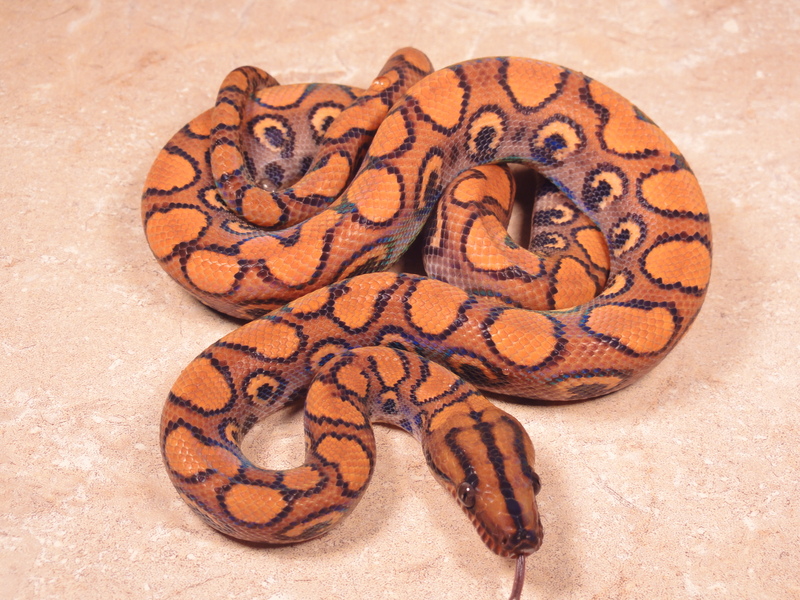
Difficulty: Advanced
- Humidity: This species has very high humidity requirements
Adult Size
- Male: 5 to 7 feet (1.5 to 2.1 meters)
- Females tend to be on the larger end
Life Cycle
- Average Lifespan: 25+ years
- Viviparous: Live Birth
Enclosure Size
- 4x2x2 feet minimum for an adult
- Bigger is always better as they are known to be good climbers. Be sure to maintain necessary environmental conditions.
Husbandry Values
- Temperature:
- Ambient: 77-80°F (25-26.6°C)
- Basking: 85-90°F (29.4-32.2°C)
- The basking area should never exceed 90°F (32.2°C)
- Humidity: 70-80% (80-90% while in shed)
- Lighting: No specific requirements
- UV Light may be beneficial
Diet
- Carnivore: Rats or Mice
Behavior Notes
- Semi-Arboreal: These snakes may enjoy climbing
- Temperament: Captive bred species are usually docile & friendly
- Ambush predator: This species hunts by surprising and wrapping its prey
***These care sheets assume that you understand the basics of snake care & husbandry.
If you are a new snake owner, it is recommended that you read our articles on general reptile care and then fine tune the requirements for the specific species you are interested in.
Habitat
The Brazilian Rainbow Boa is found in the tropical rainforests of lower Central America and South America, where temperatures range from 70-90 degrees but are relatively stable and average relative humidity ranges from 77% in the dry season and 88% in the rainy season.
Humidity can be a challenge for new and more experienced reptile keepers, but it is essential for the maintenance of this species. Humidity gauges are important, but many of them will fail under these higher ranges. It is important to watch the snake. An incomplete shed or a snake consistently seeking shelter under (or soaking in) its water bowl may need higher humidity. Denting/dimpling in the lens of the eye can also be an indicator that humidity is not high enough. Blocking the screen in glass enclosures may be necessary. And, of course, it is essential to make sure that the substrate is not soaked, which may promote mold growth and put your snake at risk of bacterial growth on their scales (scale rot).
Feeding
This species is carnivorous and feeds on rodents. Feeding a rodent that is big around as the snake’s girth an average of once a week is a fine guideline here. Monitor the snake’s weight—as your boa reaches adulthood, you may feed less frequently to avoid obesity.
This species does well feeding at night.
Brazilian vs Columbian
The major distinction between these species seems to be color, with the Brazilian Rainbow Boa generally sporting brighter colors than the Columbian.
References
Photo Credit
- Banner- Animalia http://animalia.bio/rainbow-boa
- Article body- Moonlight Boas http://www.moonlightboas.com/
